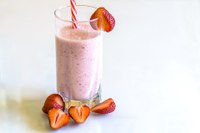Prairie Fare: Are you taking care of your skin?
(Click an image below to view a high-resolution image that can be downloaded)
“I thought you were wearing white knee socks,” someone said.
Then the person laughed when she was close enough to see me better.
I was not wearing white socks. I had bare legs.
That comment certainly built my confidence when I was a young girl.
Then self-tanning lotion came along. These early self-tanning lotions made my legs turn orange.
Thankfully, formulations have improved.
Actually, the older you get, the less you care about insensitive comments.
Self-tanning lotions usually contain DHA (dihydroxyacetone), which is non-toxic for use on our skin. Self-tanning lotions are much less hazardous than exposure to the ultraviolet rays of the sun. You still need to practice sun safety practices.
Some people use tanning beds to get a golden tan. Tanning beds, by the way, are among the “known carcinogens” according to the Food and Drug Administration.
Those of us with light skin are at higher risk of something more hazardous than embarrassment. Besides being fair-skinned, consider several risk factors for skin cancer. However, even if you naturally have darker skin or become tan easily, you still can be at risk for skin cancer.
If you answer “yes” to some of these questions you could be at greater risk of skin cancer.
- Do you have a history of previous skin cancer diagnosis?
- Do you have a family history of skin cancer?
- Do you have birthmarks, moles and/or light tans spots, which often are called “congenital nevi”?
- Do you have freckles?
- Are you male?
- Are you a tanning bed user?
- Are you a smoker?
- Do you have a tendency to get a sunburn?
Although we may hear more about prostate, colon, lung or breast cancer, skin cancer is the most common type of cancer, with 5.6 million cases occurring annually.
In fact, May is National Skin Cancer and Melanoma Awareness Month.
Basal cell carcinoma, squamous cell carcinoma and melanoma are the three main types of skin cancer. Melanoma is the deadliest form of skin cancer. Twenty people in the U.S. die of melanoma every day.
When caught early, skin cancer is treatable. By doing skin self-checks, you can spot the beginnings of skin cancer.
In particular, look for moles or spots that have changed color, have irregular borders, are larger than the size of a pencil eraser (1/4 inch) and appear after age 21. If you have spots that are itchy and do not heal, they can be a warning sign. Let your healthcare provider know these things, because you may need further testing.
As we move toward sunny, warmer months, many people spend more time in the sun gardening, golfing, fishing and doing other outdoor activities. When possible, seek shade when the sun is at its most intense (between 10 a.m. and 2 p.m.). Be sure to use a broad-spectrum sunscreen with a sun protection factor (SPF) of at least 30.
Wear a hat that covers your ears and the back of your neck. Ball caps are very popular, but they do not serve as good protection for the tops of your ears or the back of your neck.
Be a trend setter and wear a floppy cap that provides better protection. Wear long sleeves and long pants to protect your skin. Some sun-protection fabrics have been invented, which can block UVA and UVB rays.
Skin cancer awareness is among the priority topics of the North Dakota Cancer Coalition. This group has more information for adults and children. Check out the resources at www.ndcancercoalition.org/ priority-topics/skin-cancer/. Children might enjoy listening to the Parker the Penguin video.
Be sure to stay hydrated in addition to protecting your skin. Your skin, like the rest of your body needs nourishing food to repair itself. This recipe is courtesy of Iowa State’s Spend Smart Eat Smart program. It is rich in vitamin C from the fruit, potassium from the banana, and protein and healthful fats from the peanut butter. Drink up!
Peanut Butter Berry Smoothie
1 cup strawberries, cut in half
1 banana, cut into four pieces
3 tablespoons milk
2 tablespoons smooth peanut butter
6 ice cubes
Place all ingredients in a blender. Blend until smooth and serve immediately.
Makes two servings. Each serving has 170 calories, 8 grams (g) fat, 5 g protein, 24 g carbohydrate, 4 g fiber and 65 milligrams sodium.
(Julie Garden-Robinson, Ph.D., R.D., L.R.D., is a North Dakota State University Extension food and nutrition specialist and professor in the Department of Health, Nutrition and Exercise Sciences.)
NDSU Agriculture Communication – April 18, 2024
Source: Julie Garden-Robinson, 701-231-7187, julie.garden-robinson@ndsu.edu
Editor: Elizabeth Cronin, 701-231-7006, elizabeth.cronin@ndsu.edu




